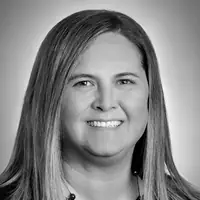BONEBRIDGE for Pediatrics: Exceptional Sound Quality, Comfort, & Convenience
AudiologyOnline: Tell us about your practice and what kinds of patients you serve?
Dr. Jessica Stich-Hennen: I am a pediatric audiologist at a children’s hospital ENT clinic and an outpatient audiology clinic. I specialize in working with pediatric patients with craniofacial anomalies including microtia/atresia, chronic conductive hearing loss, and single-sided deafness.
AudiologyOnline: How long have you worked with bone conduction devices?
Dr. Jessica Stich-Hennen: I have been working with bone conduction hearing devices for over 15 years. As a pediatric audiologist, I have worked with infants through young adult-aged patients using implantable and non-implantable bone conduction devices.
AudiologyOnline: How long have you worked with MED-EL’s BONEBRIDGE hearing implant? What initially sparked your interest in this technology?
Dr. Jessica Stich-Hennen: My first pediatric BONEBRIDGE patient was in June 2019. This patient had a long history with binaural amplification including traditional BTE hearing aids and non-implantable bone conduction hearing devices on a soft band. After learning about BONEBRIDGE implants at an audiology conference, my interest sparked for this patient as an alternative option for amplification. My hope was that this was an amplification option with better retention, cosmetically appealing and without significant feedback issues. Instantly, at the initial fitting, this teenaged patient was blown away at the sound quality, enjoyed customizing the microphone covers and not only exceeded my expectations, but was life-changing for this patient. In fact, she received a second BONEBRIDGE in the contralateral ear about six months later!
AudiologyOnline: What do you think are the most important aspects of counseling these candidates/families preoperatively?
Dr. Jessica Stich-Hennen: I think when working with pediatrics, the most important things to discuss prior to surgery include realistic goals for device use/wear time and how the family can support this. Personally, as a parent of a child with hearing loss, I know and understand the daily struggles of getting technology consistently worn by a child.
AudiologyOnline: What feedback have you heard from your surgeons about BONEBRIDGE?
Dr. Jessica Stich-Hennen: Specifically with my experience, the surgeons have had positive experiences with the BONEBRIDGE implant.
AudiologyOnline: Why do you recommend BONEBRIDGE for your patients?
Dr. Jessica Stich-Hennen: When discussing bone conduction implants with my patients and their families, I review all appropriate options based on audiometric findings. Specifically, I review the pros and cons for the external processors for each manufacturer. I discuss and review the following: battery life, magnet retention, Bluetooth connectivity and overall sound quality.
AudiologyOnline: What features of BONEBRIDGE do you think resonate the most with your recipients/families?
Dr. Jessica Stich-Hennen: Magnet strength options and retention is a bonus with BONEBRIDGE since magnet location can vary and with the various magnet strengths MED-EL offers, our families don’t have to manage multiple retention options. In addition, families really enjoy the battery life of SAMBA 2 which is three times longer than other devices. I think these features help inform families which option may be best for their daily life and financial concerns. For patients transitioning from a soft band, they are getting great sound quality without feedback and it’s an easy transition.
AudiologyOnline: Could you talk about a successful patient case study? Were there any unique challenges or hurdles that this patient experienced that BONEBRIDGE helped address?
Dr. Jessica Stich-Hennen: I think honestly it would go back to my first BONEBRIDGE patient in 2019. This patient presented with a moderately severe mixed hearing loss bilaterally. One ear has chronic eustachian tube dysfunction and the other has an unrepairable tympanic membrane perforation. For years, this patient used traditional BTE hearing aids with custom earmolds. This patient struggled with occasional ear drainage from one ear and significant fluctuations in hearing thresholds from the other ear. After a year of traditional BTE hearing aid struggles, this patient switched to non-implantable bone conduction hearing devices. She immediately preferred the sound quality of the bone conduction amplification. Even though the bone conduction sound quality was preferred, this patient struggled with the soft band fit and frequent feedback issues.
After learning about BONEBRIDGE implants at an audiology conference, my interest sparked for this patient as an alternative option for bone conduction amplification. The initial activation was amazing. The patient was amazed at the sound quality, device comfort and most importantly NO FEEDBACK. At the follow-up visit, I performed aided speech testing and that was a game changer. Aided speech recognition thresholds within normal hearing limits and excellent aided word recognition scores. With binaural BONEBRIDGE implants, this patient finally had access to soft speech without battling feedback and two bone conduction devices that could be worn with draining ears and fluctuating air conduction thresholds.
AudiologyOnline: What types of outcome measures do you implement in your follow-up protocol?
Dr. Jessica Stich-Hennen: I love using functional measurements to determine how technology is improving sound access for pediatric patients. Clinically, we perform aided speech testing routinely which includes aided speech-reception thresholds (SRTs), and word recognition testing in quiet and noise conditions. For noise testing, we typically use pediatric AZBio or BKB SIN, PBKs, or CNCs for word recognition depending on the child’s age and ability. In addition, we use a version of the International Outcome Inventory for Hearing Aids (IOI-HA) modified for caregivers to complete.
AudiologyOnline: How does BONEBRIDGE impact your patient’s lives in a positive way?
Dr. Jessica Stich-Hennen: Many ways…sound quality, comfort of device, ease of use and durability.
AudiologyOnline: What would you say to someone who is new to using BONEBRIDGE or is considering adding BONEBRIDGE to their clinical practice? What benefits can they expect to see for their clinic/patients?
Dr. Jessica Stich-Hennen: With the current programming software and SAMBA 2 audio processor, this is an excellent option for patients looking for bone conduction implants. Patients have access to great sound quality with comfort and durability.
AudiologyOnline: Thank you Dr. Stich-Hennen for your time!


